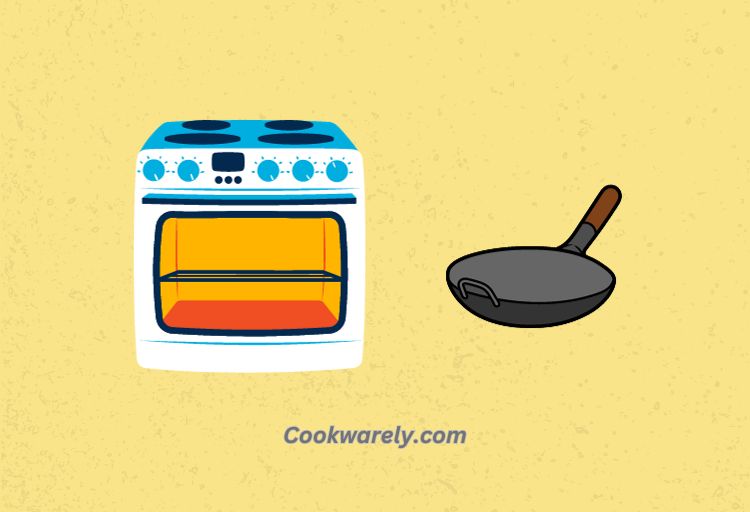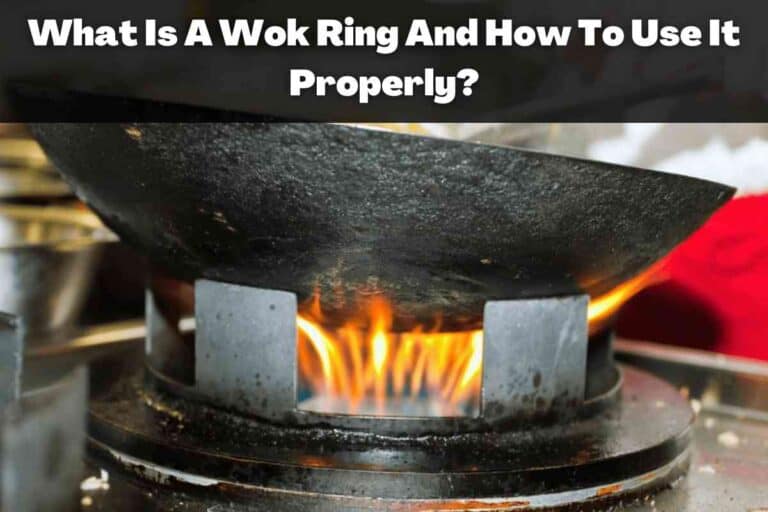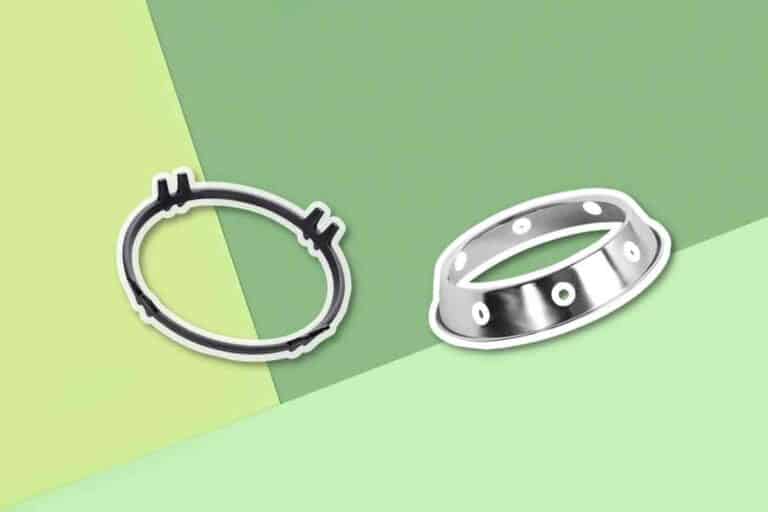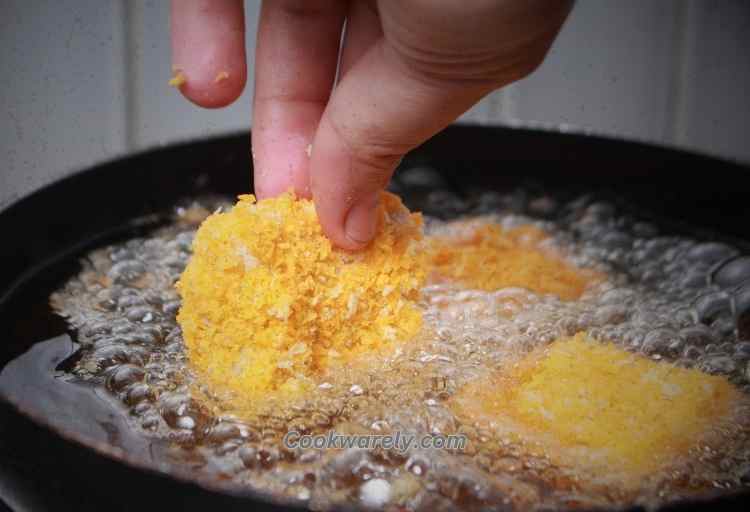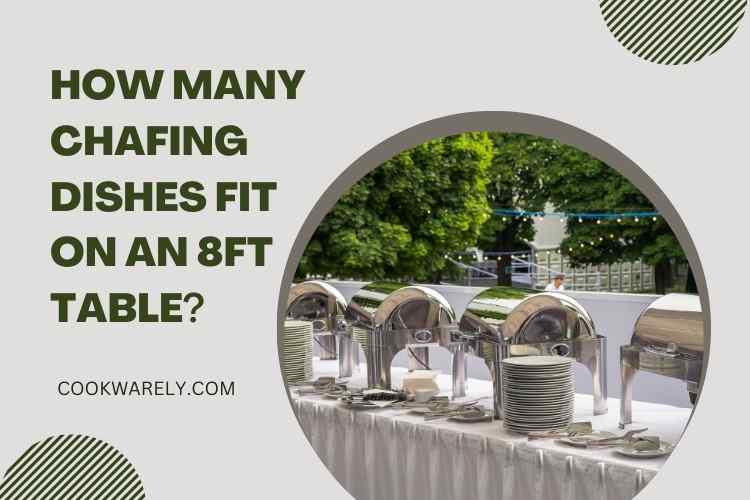Does Carbon Steel Work on Induction?
Induction cooktops have become increasingly popular in recent years due to their efficiency and safety compared to traditional gas or electric stoves.
However, not all cookware is compatible with induction technology. Carbon steel is a popular material for cookware due to its durability and versatility, but does carbon steel work on induction cooktops?
Yes, carbon steel is compatible with induction cooktops due to its ferromagnetic properties. However, the cookware must have a flat bottom and make direct contact with the cooktop for proper heating.
In this article, we will explore the answer to this question and provide you with all the information you need to know about using carbon steel on induction cooktops.

What is Induction Cooking?
Before we dive into the compatibility of carbon steel and induction cooktops, let’s first understand how induction cooking works.
Induction cooktops use an electromagnetic field to heat up the cookware directly, rather than heating up the surface of the cooktop as with gas or electric stoves.
This results in faster and more efficient cooking, as well as a safer cooking experience since the cooktop itself does not get hot.
What is Carbon Steel?
Carbon steel is a type of steel that has a higher carbon content than stainless steel. This makes it stronger and more durable, as well as more reactive to heat.
Carbon steel cookware is known for its ability to develop a natural non-stick surface over time with proper seasoning and care.
It is also versatile and can be used for a variety of cooking methods, from searing to sautéing to frying.
Is Carbon Steel Compatible with Induction Cooktops?
Do carbon steel pans work on induction: The short answer is yes, carbon steel is compatible with induction cooktops. This is because carbon steel is ferromagnetic, which means it can be magnetized.
Induction cooktops work by creating a magnetic field that heats up the cookware directly. Since carbon steel is magnetic, it can be heated up by the magnetic field generated by the induction cooktop.
However, not all carbon steel cookware is created equal. Some carbon steel pans may not be compatible with induction cooktops if they have a warped or uneven bottom.
This is because the magnetic field needs to make direct contact with the cookware in order to heat it up. If there is any gap between the cookware and the cooktop, the magnetic field will not be able to heat it up properly.
How to Test if Your Carbon Steel Cookware is Compatible with Induction Cooktops
If you’re not sure whether your carbon steel cookware is compatible with induction cooktops, there is a simple test you can do to find out.
Take a magnet and place it on the bottom of your carbon steel pan. If the magnet sticks, then your pan is ferromagnetic and compatible with induction cooktops. If the magnet does not stick, then your pan is not ferromagnetic and cannot be used on induction cooktops.
It’s important to note that even if your carbon steel cookware is compatible with induction cooktops, you may still need to make some adjustments to your cooking technique.
Induction cooktops heat up cookware much faster than gas or electric stoves, so you may need to adjust your heat settings accordingly.
It’s also important to use the right size cookware for your induction cooktop, as using a pan that is too small or too large can result in uneven heating.
Benefits of Using Carbon Steel on Induction Cooktops
So, can carbon steel be used on induction? Using carbon steel cookware on induction cooktops has several benefits. First and foremost, it allows you to take advantage of the efficiency and safety of induction cooking while still using your favorite cookware.
Carbon steel is also durable and long-lasting, so investing in a high-quality carbon steel pan can be a smart choice for your kitchen.
Another benefit of using carbon steel on induction cooktops is that it allows you to achieve a perfect sear. Carbon steel is great for searing meats and vegetables, and the even heating provided by induction cooktops ensures that your food will cook evenly and thoroughly.
Additionally, carbon steel cookware like Wok is versatile and can be used for a variety of cooking methods, from sautéing to frying.
Can You Use Carbon Steel on Induction?
Yes, you can use carbon steel on induction cooktops. Carbon steel is ferromagnetic, which means it can be magnetized and heated up by the magnetic field created by the induction cooktop.
However, it’s important to ensure that your carbon steel cookware has a flat bottom and makes direct contact with the cooktop for proper heating.
Is Carbon Steel Induction Compatible?
Will carbon steel work on induction? Carbon steel is induction compatible due to its ferromagnetic properties. However, not all carbon steel cookware is created equal. Some carbon steel pans may not be compatible with induction cooktops if they have a warped or uneven bottom.
To test if your carbon steel cookware is compatible with induction cooktops, simply place a magnet on the bottom of the pan. If the magnet sticks, then your pan is ferromagnetic and compatible with induction cooktops.
How to Stir Fry on Induction Cooktop
Stir frying on an induction cooktop is a great way to achieve perfectly cooked and evenly heated stir fry dishes. Here are some steps to follow:
- Preheat your carbon steel wok or pan on medium-high heat for a few minutes.
- Add your oil and let it heat up for a few seconds.
- Add your ingredients, starting with the aromatics (garlic, ginger, etc.) and then adding the vegetables and protein.
- Stir fry your ingredients, moving them around constantly to ensure even cooking.
- Adjust the heat as needed to prevent burning or overcooking.
- Once your stir fry is cooked to your liking, remove it from the heat and serve.
Conclusion
In the end, I hope you are now well aware of the answer to “does carbon steel pan work on induction”.
To sum up, carbon steel is compatible with induction cooktops and can be a great choice for those looking to take advantage of the efficiency and safety of induction cooking.
However, it’s important to ensure that your carbon steel cookware is ferromagnetic and has a flat bottom in order to ensure proper heating.
With the right carbon steel cookware and some adjustments to your cooking technique, you can achieve delicious and perfectly cooked meals on your induction cooktop.

